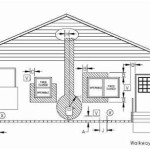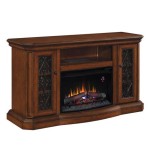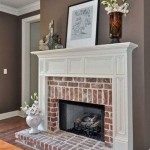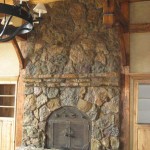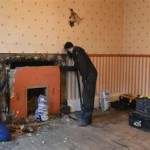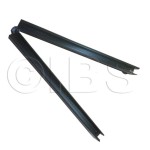Understanding Wood Burning Fireplace Opening Size: A Comprehensive Guide
The wood-burning fireplace, a timeless architectural feature, offers warmth, ambiance, and a focal point within a living space. However, its effectiveness and safety are intrinsically linked to the dimensions of its opening. The fireplace opening size, encompassing the height, width, and depth, significantly influences draft, combustion efficiency, and the overall aesthetic appeal of the unit. Selecting an appropriate opening size isn't merely about visual preference; it's a crucial determinant of how well the fireplace functions and how safely it operates within a home.
The objective of this article is to provide a thorough understanding of the various factors that contribute to determining the optimal wood-burning fireplace opening size. It will explore the principles of combustion, the relationship between opening dimensions and draft, and the potential consequences of choosing an inappropriate size. Furthermore, it will delve into relevant building codes and standards, as well as offer guidance on selecting the appropriate opening size based on room size and specific design considerations.
Key Point 1: The Relationship Between Fireplace Opening Size and Draft
Draft, the upward flow of air through the fireplace and chimney, is paramount for efficient and safe combustion. The fireplace opening size directly impacts the draft. A properly sized opening allows for sufficient airflow to fuel the fire, facilitating complete combustion of the wood and minimizing the production of smoke and harmful byproducts like carbon monoxide. Conversely, an improperly sized opening can lead to a variety of problems.
If the opening is too large, it can create an excessive draft, drawing too much air into the firebox. This rapid airflow can cool the fire, reducing its efficiency and increasing wood consumption. It can also lead to the expulsion of hot embers and sparks into the room, posing a significant fire hazard. Furthermore, an oversized opening can make it challenging to establish and maintain a consistent fire, as the draft may be too strong to allow the fire to build up sufficient heat.
Conversely, if the opening is too small, it can restrict airflow, resulting in a weak or smoky fire. Inadequate draft can lead to incomplete combustion, increasing the production of smoke, creosote, and carbon monoxide. Smoke may backdraft into the room, creating an unpleasant and potentially dangerous environment. A small opening can also make it difficult to add fuel to the fire and to maintain the desired level of heat output.
The optimal fireplace opening size balances the need for sufficient airflow to support combustion with the need to prevent excessive draft. The relationship between opening size and draft is also influenced by other factors, such as the height and diameter of the chimney, the type of wood being burned, and the ambient air pressure within the home.
Key Point 2: Combustion Efficiency and Fireplace Dimensions
Combustion efficiency refers to how completely the fuel (wood) is burned during the combustion process. A fireplace with good combustion efficiency extracts more heat from the wood, reducing wood consumption and minimizing the production of pollutants. The dimensions of the fireplace, particularly the opening size, play a critical role in achieving optimal combustion efficiency.
A properly sized opening, in conjunction with a well-designed firebox, promotes complete combustion by ensuring an adequate supply of oxygen to the fire. Oxygen is a necessary element for the combustion reaction to occur. When the opening size is appropriate for the size of the firebox and the chimney draft, the fire receives a consistent and sufficient supply of oxygen, leading to more complete combustion of the wood. This results in a hotter, cleaner-burning fire that produces more heat and less smoke.
In contrast, an oversized opening can lead to rapid combustion and excessive heat loss up the chimney. While the fire may appear large and impressive, much of the heat generated is lost to the atmosphere. This reduces the overall efficiency of the fireplace and increases the amount of wood required to maintain a comfortable level of warmth. Furthermore, the rapid combustion can lead to the formation of more creosote, a flammable substance that can accumulate in the chimney and pose a fire hazard.
A undersized opening, on the other hand, can lead to incomplete combustion. When the fire lacks sufficient oxygen, it burns incompletely, producing more smoke, soot, and unburned hydrocarbons. These pollutants can contribute to indoor air pollution and pose health risks. Incomplete combustion also reduces the heat output of the fireplace, making it less effective as a source of warmth.
Therefore, selecting the appropriate opening size is essential for maximizing combustion efficiency and minimizing the environmental impact of wood-burning fireplaces. This involves considering the size of the firebox, the height and diameter of the chimney, and the type of wood being burned.
Key Point 3: Building Codes, Standards, and Sizing Recommendations
Building codes and standards provide guidelines for the safe and efficient installation and operation of wood-burning fireplaces. These codes often specify minimum and maximum dimensions for the fireplace opening, as well as requirements for chimney sizing and construction. Adhering to these codes is crucial for ensuring the safety of the occupants and for complying with local regulations. Local building departments can provide specific details about the codes and standards enforced in a particular area.
While building codes provide minimum requirements, it is often beneficial to consult with a qualified fireplace professional to determine the optimal opening size for a specific application. Fireplace professionals have the knowledge and experience to assess various factors, such as room size, chimney height, and desired heat output, to recommend the most appropriate dimensions. They can also advise on the selection of fireplace inserts and other accessories that can improve the efficiency and safety of the fireplace.
General sizing recommendations often involve considering the size of the room in which the fireplace is located. A larger room typically requires a larger fireplace opening to provide sufficient heat. However, it is important to avoid oversizing the opening, as this can lead to excessive draft and reduced efficiency. A common rule of thumb is to size the fireplace opening so that its area is approximately 1/100th to 1/150th of the room's area. For example, a 300 square foot room might require a fireplace opening with an area of 2 to 3 square feet.
In addition to room size, the height and diameter of the chimney also play a crucial role in determining the appropriate opening size. A taller chimney generally creates a stronger draft, which may require a smaller opening to prevent excessive airflow. Conversely, a shorter chimney may require a larger opening to ensure adequate draft. The diameter of the chimney should also be proportional to the size of the fireplace opening. A chimney that is too narrow can restrict airflow, while a chimney that is too wide can lead to excessive draft.
The type of wood being burned can also influence the optimal opening size. Hardwoods, such as oak and maple, typically require more oxygen to burn efficiently than softwoods, such as pine and fir. Therefore, a fireplace that is primarily used for burning hardwoods may require a slightly larger opening than a fireplace that is used for burning softwoods. It's recommended to use seasoned wood for optimal burning characteristics and reduced smoke production.
Ultimately, the selection of the appropriate wood-burning fireplace opening size requires careful consideration of various factors, including room size, chimney dimensions, building codes, and the type of wood being burned. Consulting with a qualified fireplace professional can help ensure that the fireplace is properly sized and installed for safe and efficient operation. The goal is to create a fireplace that provides warmth, ambiance, and enjoyment while minimizing the risks associated with improper combustion and draft control.

The Proper Way To Measure Dimensions Of A Fireplace

Superior Wrt3036 36 Inch Radiant Wood Burning Fireplace

Is My Fireplace Large Enough Recess Size Diagram

How To Measure Your Fireplace For A New Set Of Doors We Love Fire

Fireplace Mantel Worksheet

36 Elite Made In America Fireplace Xtrordinair

Vanguard Wood Burning Corner Fireplaces

7 Fireplace Dimensions For Diffe Types Size Guide

Fireplaceinserts Net Timberwolf Epi22 Fireplace Insert Economizer

Osburn Matrix Wood Insert Ob02028
Related Posts

